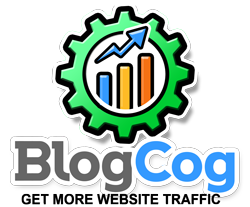
How to Audit for 'Index Bloat' and Purge Useless Pages: A Step-by-Step Guide to Clean Up Your Site and Boost SEO
Share
Let's put your ideas into action...
and clean up that bloated index of yours! If your website's search engine index is packed with low-value or duplicate pages, it's time to roll up your sleeves and declutter. Index bloat isn't just a technical hiccup—it's a full-blown SEO emergency. But fear not! We're here to guide you through the process of auditing for index bloat and purging those useless pages.
What Is Index Bloat and Why Should You Care?
Index bloat occurs when search engines like Google index too many low-quality or irrelevant pages from your site. These can include duplicate content, thin pages, outdated posts, or parameter-based URLs. The result? Wasted crawl budget, diluted link equity, and a muddled site structure that confuses search engines and users alike. In short, index bloat can significantly hinder your SEO performance.
Step 1: Conduct a Comprehensive Site Audit
Your first task is to identify the culprits. Use tools like Google Search Console, Screaming Frog, or Ahrefs to crawl your site and identify low-value pages. Look for:
- Duplicate content
- Thin content
- Outdated pages
- Parameter URLs
- Soft 404s
- Orphan pages
Once you've identified these pages, categorize them based on their value to your site. This will help you decide whether to keep, merge, redirect, or remove them.
Step 2: Implement 'Noindex' Tags for Low-Value Pages
For pages that offer little to no SEO value, add a <meta name="robots" content="noindex, follow" /> tag to prevent search engines from indexing them. This tells search engines to stop including these pages in their index while still following the links on them. Ideal candidates for 'noindex' include:
- Tag or archive pages
- Internal search result pages
- Thank-you, login, or print-only pages
- Thin content pages with low engagement or traffic
Many content management systems (CMSs) like WordPress, Shopify, and Wix allow you to automate this via SEO plugins (e.g., Yoast, Rank Math).
Step 3: Add Canonical Tags to Duplicates
For pages with similar or duplicate content (such as product variants or paginated content), use canonical tags to tell search engines which version of a page should be indexed. Example:
<link rel="canonical" href="https://www.example.com/primary-page" />This ensures that all link equity is consolidated to a single URL, improving rankings and avoiding duplicate content penalties.
Step 4: Block Faceted Filters in robots.txt
E-commerce sites often suffer from filter-generated URLs (e.g., ?color=red&size=medium). These create endless crawl paths and duplicate content. Block them in your robots.txt file:
Disallow: /searchDisallow: /filter/*Important: Only block URLs that don’t need to be indexed. Avoid disallowing essential pages, as this may unintentionally harm your SEO.
Step 5: Clean and Resubmit Your Sitemap
Once low-value URLs are deindexed or removed, update your XML sitemap to reflect only the pages you want indexed. This signals Google to focus on high-priority content. Steps:
- Remove outdated or 'noindex' URLs from the sitemap.
- Use dynamic sitemap plugins if on WordPress.
- Resubmit the sitemap in Google Search Console under Index > Sitemaps.
A clean sitemap ensures Google allocates crawl budget efficiently moving forward.
Step 6: Monitor and Adjust
SEO is an ongoing process. Regularly monitor your site's performance and make adjustments as needed. Use tools like Google Analytics and Google Search Console to track changes and measure the impact of your efforts. Over time, you should see a gradual reduction in low-value URLs and an improvement in your site's SEO performance.
Preventing Index Bloat in the Future
Cleaning up is one thing—keeping it from happening again is another. Put these practices in place:
- Review content regularly: Set a schedule to audit old blog posts, service pages, or seasonal campaigns.
- Limit auto-generated pages: Filtered navigation, tag pages, and calendar archives can explode your page count. Use canonical tags or block them from crawling.
- Control what goes in your sitemap: Only include high-value, index-worthy URLs.
By implementing these strategies, you can maintain a lean, efficient index that supports your SEO goals and improves your site's performance in search engine rankings.
Conclusion
Index bloat isn't just a backend tech issue—it directly impacts rankings, traffic, and how Google sees your site. Legacy pages are the quiet culprits here. They creep in unnoticed and slowly choke your crawl budget. Don't let outdated, duplicate, or thin pages sabotage your SEO efforts. Start with an audit, clean up ruthlessly, and implement preventive strategies to keep your site lean and focused.
Need help cleaning up your site's index? BlogCog's Google & Bing Indexing service can assist you in optimizing your site's indexing and improving your SEO performance.
Related Posts:
